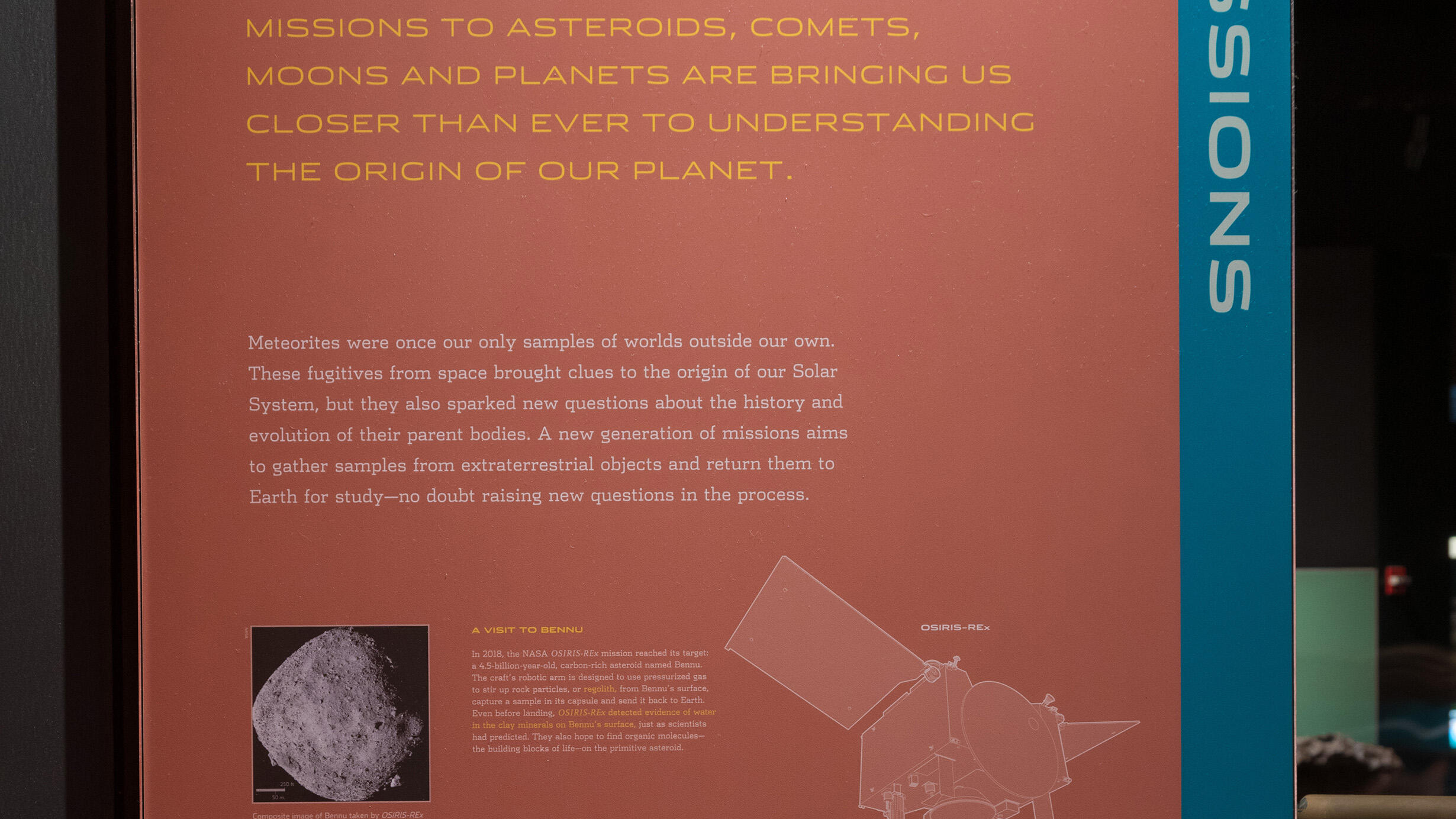Missions: Bringing the Solar System Home
Part of Hall of Meteorites.
 M. Shanley/© AMNH
M. Shanley/© AMNH Meteorites were once our only samples of worlds outside our own. These fugitives from space brought clues to the origin of our Solar System, but they also sparked new questions about the history and evolution of their parent bodies. A new generation of missions aims to gather samples from extraterrestrial objects and return them to Earth for study—no doubt raising new questions in the process.
A Visit to Bennu
In 2018, the NASA OSIRIS-REx mission reached its target: a 4.5-billion-year-old, carbon-rich asteroid named Bennu. The craft’s robotic arm is designed to use pressurized gas to stir up rock particles, or regolith, from Bennu’s surface, capture a sample in its capsule and send it back to Earth. Even before landing, OSIRIS-REx detected evidence of water in the clay minerals on Bennu’s surface, just as scientists had predicted. They also hope to find organic molecules—the building blocks of life—on the primitive asteroid.
NASA
Hayabusa 2 and Its Mascot
Deployed by the Japanese Aerospace Exploration Agency (JAXA), the sample-return mission Hayabusa 2 reached Ryugu, another carbon-rich asteroid, in June 2018. Three months later, the spacecraft dropped a small lander, MASCOT, to scout the terrain. Though only active for 17 hours, MASCOT delivered a big surprise. Scientists had expected loose, easily sampled regolith to cover Ryugu’s surface. Instead, MASCOT revealed a rugged surface dotted with boulders, posing a new challenge for Hayabusa 2’s safe landing and sample retrieval.
JAXA
A Dash of Stardust
The NASA Stardust mission was the first to return samples of a comet to Earth. Launched in 1999, Stardust flew for five years to reach comet Wild-2 and gather these cosmic puzzle pieces. The samples, which arrived on Earth in 2006, revealed the presence of the amino acid glycine, an essential building block of life. This finding supports the possibility that extraterrestrial bodies brought some of life’s key ingredients to Earth.